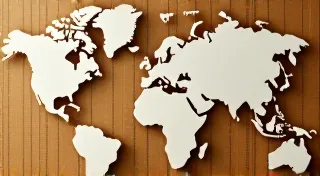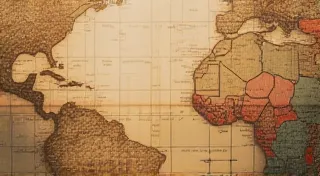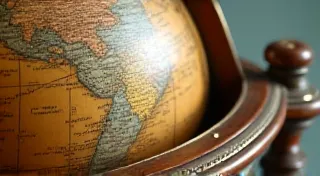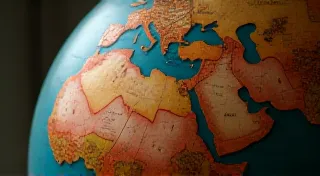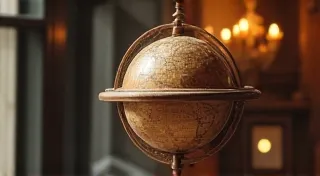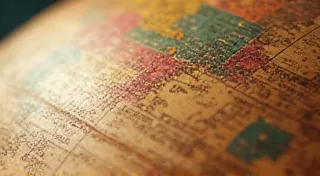Cleaning Antique Globe Paper: Removing Dirt and Grime Safely
Antique globes are fascinating pieces of history, offering a window into the cartography and artistry of bygone eras. The paper gores (the paper segments that form the globe’s surface) are particularly vulnerable to damage and often accumulate dirt, grime, and even mold over time. Improper cleaning can easily ruin a globe, fading colors, tearing paper, and obliterating delicate details. This guide details the safe and effective methods for cleaning antique globe paper, ensuring you preserve your collectible globe for future generations. Understanding the historical context of these globes, and how exploration shaped their creation, adds another layer of appreciation; exploring the influence of exploration on antique globe cartography can be enriching.
Understanding the Challenges
Before embarking on any cleaning project, it’s crucial to understand the challenges involved. Antique globe paper is typically thin, fragile, and often made with materials different from modern paper. It can be sensitive to water, solvents, and even the friction of cleaning cloths. Pigments used in printing vintage maps were often less lightfast than those used today, making them susceptible to fading. The adhesive used to adhere the paper to the globe's interior can also be weakened by inappropriate cleaning methods. Many factors contribute to the condition of an antique globe; addressing common globe damage like cracking and warping is often a preliminary step to successful cleaning.
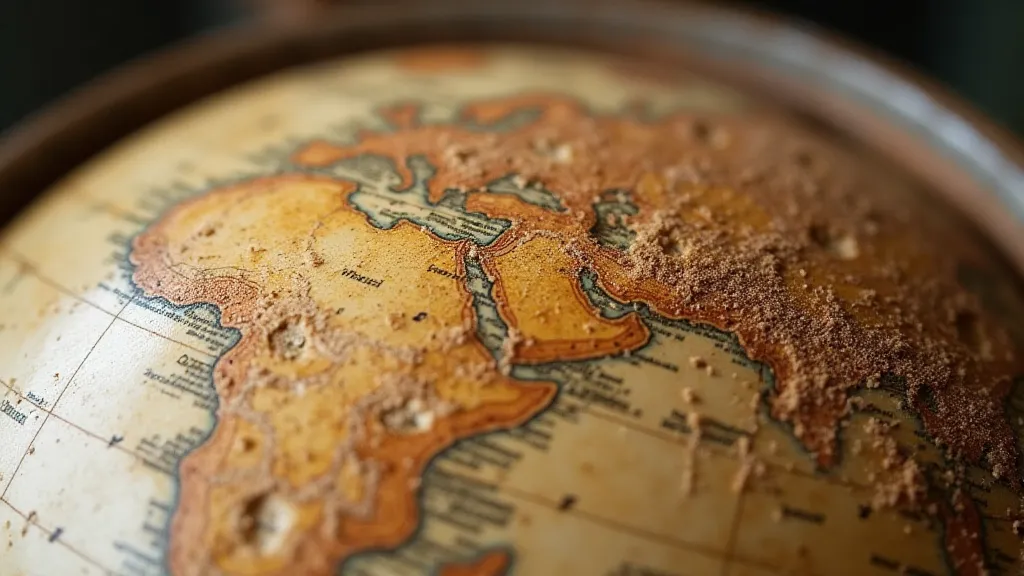
Essential Supplies
Gather the following supplies before you begin. Quality and gentleness are key!
- Soft Brushes: A variety of sizes – a large, soft artist's brush for general dust removal and smaller, pointed brushes for detail work.
- Microfiber Cloths: Use high-quality, lint-free microfiber cloths specifically designed for cleaning delicate surfaces.
- Distilled Water: Always use distilled water to avoid mineral deposits.
- pH-Neutral Cleaning Solution (Optional): A very mild solution such as a specialized paper cleaning solution or a diluted mixture of hand soap (without dyes or perfumes) and distilled water. Always test in an inconspicuous area first.
- Cotton Swabs: For precise cleaning of small areas.
- Gloves: To protect the globe paper from oils on your hands.
Step-by-Step Cleaning Process
- Dust Removal: Begin by gently brushing the globe paper with a large, soft brush. Work slowly and methodically, always brushing in the same direction to avoid stressing the paper. Pay close attention to the creases and edges where dust and debris tend to accumulate.
- Gentle Wiping (Dry): After dusting, gently wipe the surface with a clean, dry microfiber cloth. This removes any lingering loose particles.
- Damp Wiping (Optional - Test First!): If dust and grime persist, a very light damp wipe *may* be necessary. Dip a microfiber cloth in distilled water, wring it out thoroughly (it should be barely damp), and gently wipe the globe paper. Do this in small sections and immediately dry with a separate, dry microfiber cloth. Test this step on a small, hidden area of the globe first to ensure the paper and pigments are stable.
- Targeted Cleaning (Optional – Test First!): For stubborn grime or stains, a pH-neutral cleaning solution *might* be required. Apply a *tiny* amount of the solution to a cotton swab and gently dab the affected area. Immediately blot dry with a clean microfiber cloth. This step carries the highest risk of damage and should only be attempted if absolutely necessary and *after* a successful test.
- Drying: Allow the globe paper to air dry completely in a well-ventilated area, away from direct sunlight or heat. This prevents warping and ensures proper adhesion.
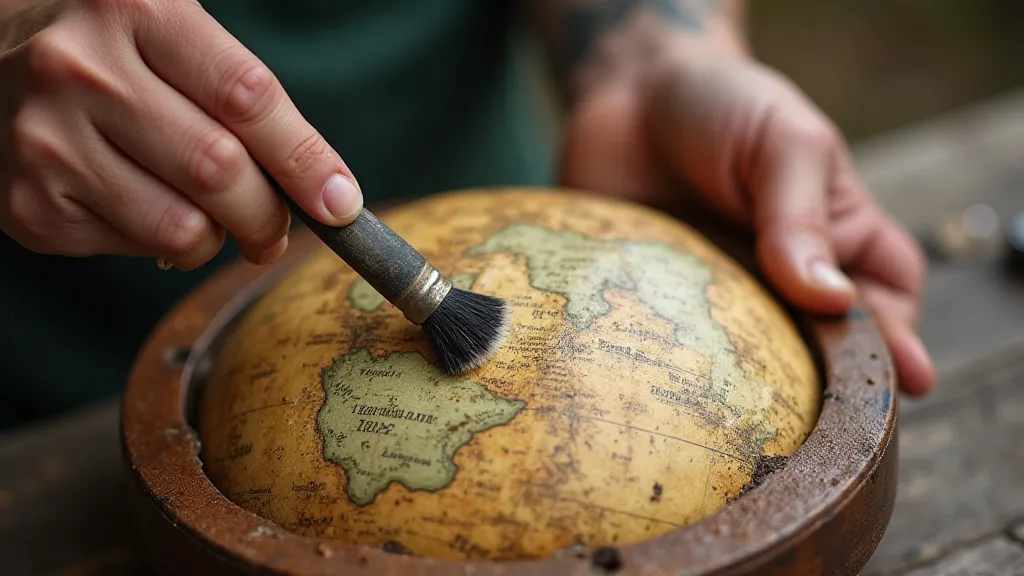
Important Considerations & Troubleshooting
Restoring antique globes requires careful consideration of ethical boundaries. The debate surrounding ethical considerations in antique globe restoration includes questions about how much intervention is appropriate and whether minimal visibility techniques are always preferred. It's a balancing act between preservation and aesthetic appeal. The methods discussed here strive for that balance.
- Mold: If you discover mold, consult a professional conservator. Attempting to remove it yourself can easily damage the paper and spread the spores. Consider the potential for long-term damage; addressing mold promptly is essential.
- Fading: Some fading is inevitable with antique globes. Avoid harsh cleaning methods that could exacerbate this issue. Recognizing that some level of aging is natural and valuable is crucial.
- Adhesive Issues: Be extremely careful when cleaning near the edges of the paper gores. Aggressive cleaning can loosen the adhesive and cause the paper to detach from the globe. Understanding the historical adhesives used can inform your approach.
- Glossy vs. Matte Paper: Globe paper can vary in its finish. Glossy surfaces may require slightly different cleaning techniques - avoid excessive rubbing which can cause smudging. The manufacturing processes for paper were far different in the eras these globes were created, impacting surface finishes.
- Paper Loss and Inpainting: If you encounter areas where the paper is damaged or missing, repairing globe paper loss through inpainting techniques is a delicate process requiring specialized skills. This involves carefully matching colors and textures to seamlessly blend the repaired area with the original surface.
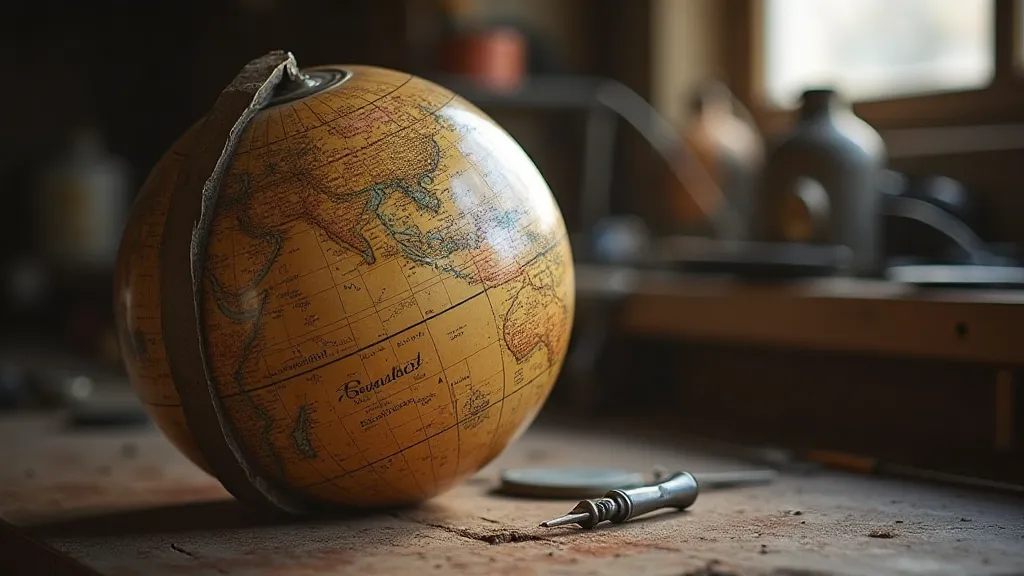
Deep Dive: Understanding Paper and Pigment Interaction
The interaction between the paper fibers and the pigments used to print antique globe maps is a complex topic. Early paper-making processes resulted in paper with higher acidity levels compared to modern, acid-free paper. This acidity can contribute to the breakdown of pigments over time, leading to fading and discoloration. Furthermore, the pigments themselves were often less stable and less lightfast than modern pigments. Certain pigments are more susceptible to damage from UV exposure and humidity, which can accelerate their degradation.
Examining the physical characteristics of the paper can provide valuable clues about its age and origin. Paper fibers can be analyzed under a microscope to determine the type of plant used in its production. The presence of watermarks can also provide information about the paper mill that produced it. This level of detail is often a domain of professional conservators.
Advanced Cleaning Techniques (For Professionals Only)
While the steps outlined above are suitable for careful home cleaning, certain advanced techniques should only be performed by experienced professionals. These may include:
- Solvent Cleaning: Utilizing carefully selected solvents to remove deeply embedded grime and stains. This carries a significant risk of damage if not performed correctly.
- Deacidification: Neutralizing the acidity of the paper to slow down its degradation.
- Humidification and Flattening: Carefully rehydrating and flattening warped paper gores.
The selection of the solvent must be extremely careful to ensure that it will not affect the underlying paper or pigments. Often, a panel test must be completed on an inconspicuous area to assess compatibility. These tests are critical for minimizing irreversible damage.
Disclaimer
Cleaning antique globes is a delicate process. The methods described in this guide are intended as general recommendations only. Always test any cleaning solution or technique on an inconspicuous area of the globe before applying it to the entire surface. If you are unsure about any aspect of the cleaning process, consult a professional conservator specializing in antique cartography. Remember that the goal is preservation, not restoration to a 'like new' state. The character and history embedded in an antique globe are part of its value.
